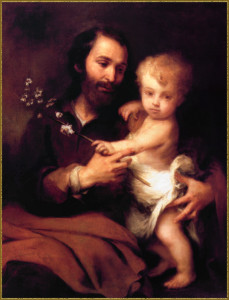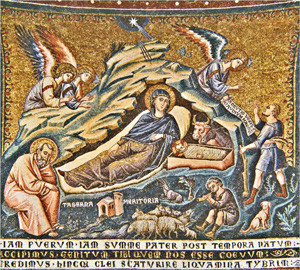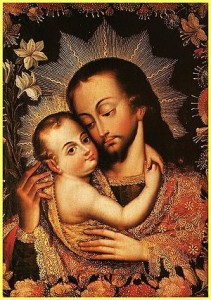Murillo
Today is the feast of St. Joseph. In the Middle Ages he was depicted only in the Nativity scene, and shown as an old man in the corner, puzzled and shut out from the goings-on.
St. Maria in Trastevere
Because marriage and family life was a mess in the Middle Ages, first the Reformers and then the Catholics of the Counter-Reformation began stressing the importance of the family and the role of the father in the family. In the Middle Ages children were often baptized by the midwife. Calvin forbade this. In the Middle Ages, If a child was baptized in the church, the mother would bring him and the father would stay at home preparing the festivities. Calvin also forbade this, and ordered that the father bring the child to church and present him for baptism.
In Catholic countries, especially in Spain, Joseph began his ascendancy. He was no longer shown as a decrepit old man but as a young vigorous man, a protector of Mary and Joseph. He, not Mary, was shown holding the infant Jesus.
The Penitentes preserved the faith among men in the Southwest. When a prospective member sought entry, he knocked at the door of the morada, asked a question and received the reply from the members within.
Quién en esta casa da la luz? Jesús
Quién la llena alegría? María
Quién la conserva en la fé? José
(Who gives light in this house? Jesus. Who fills it with joy? Mary. Who preserves it in the faith? Joseph.)
And indeed, the father, not the mother, is the key person in passing the Faith on to the children. As recent studies in the United States and Switzerland showed, the believing father is a necessary, although not sufficient, condition for passing the Faith on to the children



